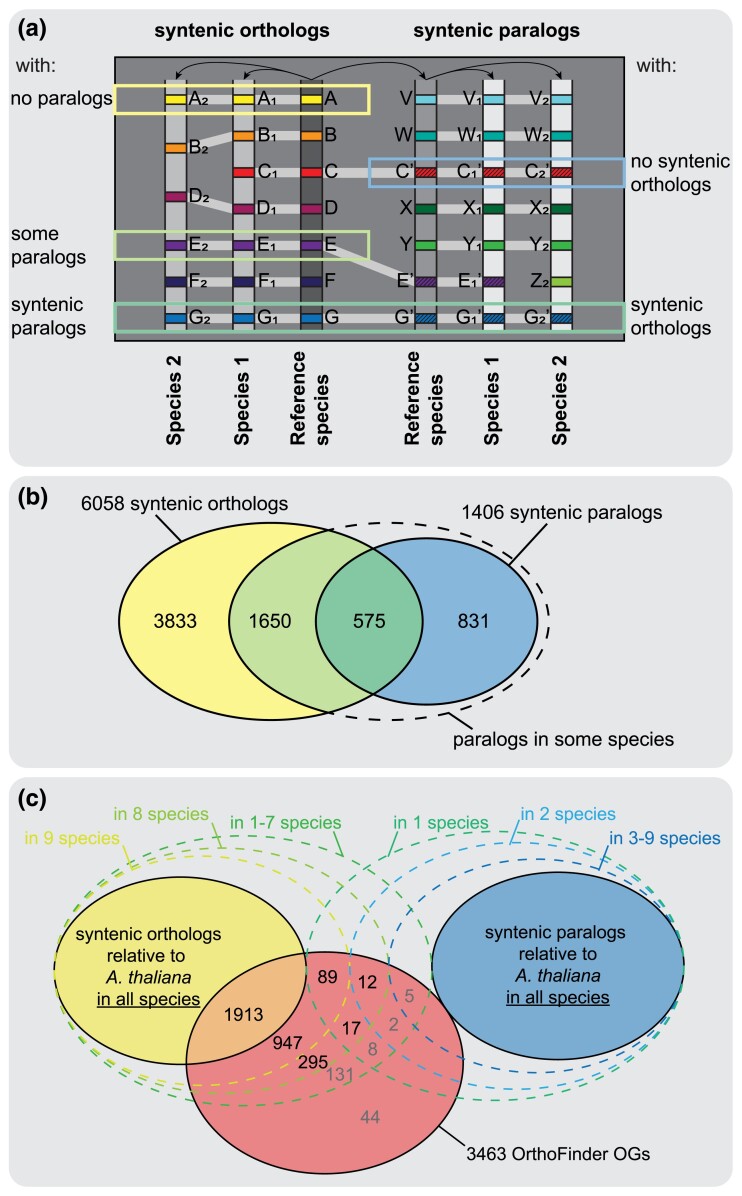Fig. 2.
Distribution of syntenic orthologs/paralogs and OrthoFinder orthologs. (a) Schematic drawing of syntenic mappings of two species against a reference. The following categories of orthologs/paralogs were analyzed: Syntenic orthologs across all species without syntenic paralogs (“no paralogs”), with syntenic paralogs found in some species (“some paralogs”), or with syntenic paralogs retained in all species (“syntenic paralogs”); syntenic paralogs without syntenic orthologs detected in all species (“no syntenic orthologs”) and syntenic paralogs with a complete set of syntenic orthologs (“syntenic orthologs”). (b) Number of syntenic orthologs/paralogs found across the 11 species of our study displayed as a Venn diagram. (c) Venn diagram showing the number of single-copy OrthoFinder orthogroups found for each combination of orthologs/paralogs in synteny to Arabidopsis thaliana and orthologs not in synteny. Numbers of orthogroups in the subsets we analyzed in detail (i.e., those with syntenic orthologs in at least eight species) are highlighted in black, others are given in gray. Few orthogroups had less than eight syntenic orthologs and are thus summarized in one category.

